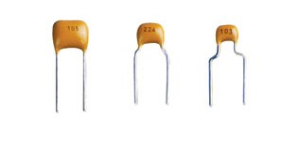-
Location:
- Home
- > news center > industry knowledge

Recharge
The process of charging a capacitor (storing charge and electrical energy) is called charging. At this time, the two plates of the capacitor are always one plate with positive electricity, and the other plate with equal negative electricity. Connect one plate of the capacitor to the positive pole of the power source (such as a battery pack), and the other plate to the negative pole of the power source, and the two plates are respectively charged with equal amounts of heterogeneous charges. After charging, there is an electric field between the two plates of the capacitor, and the electric energy obtained from the power supply is stored in the capacitor during the charging process.
Discharge
The process of causing the charged capacitor to lose charge (release of charge and electrical energy) is called discharge. For example, a wire is used to connect the two poles of a capacitor, and the charges on the two poles neutralize each other, and the capacitor will release charges and electrical energy. After discharge, the electric field between the two plates of the capacitor disappears, and the electric energy is converted into other forms of energy.
In general electronic circuits, capacitors are commonly used to achieve bypass, coupling, filtering, oscillation, phase shift and waveform transformation, etc. These functions are the evolution of its charging and discharging functions.
no information